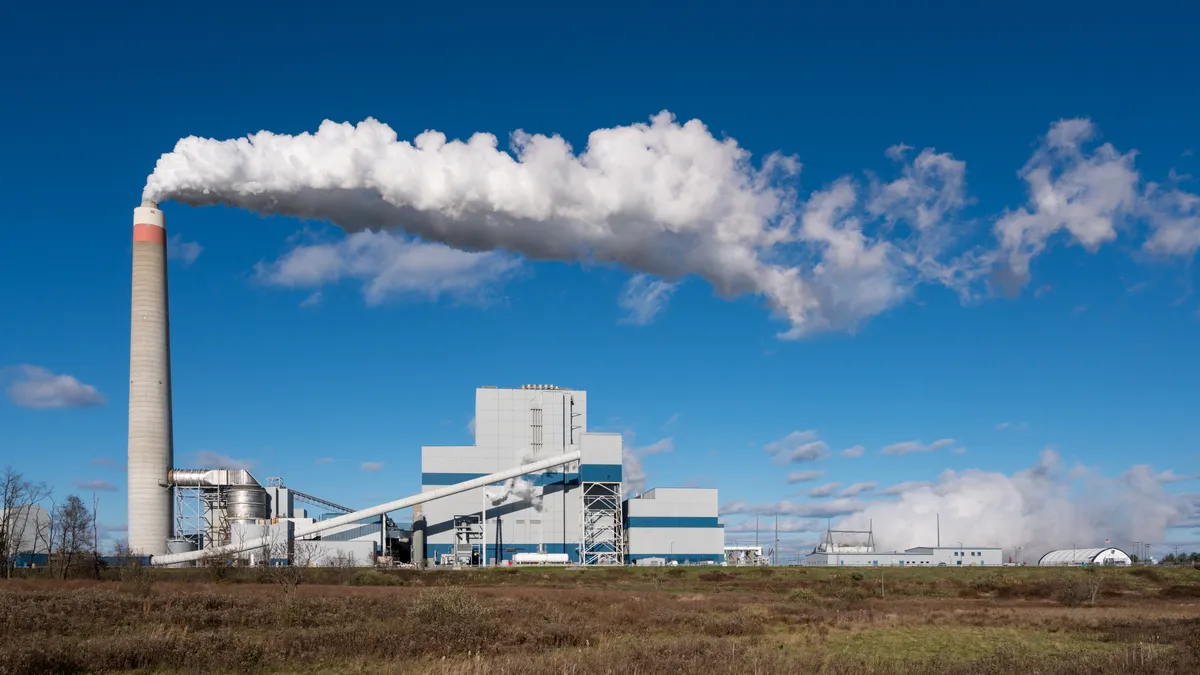Dive Brief:
- The Environmental Protection Agency Wednesday proposed tightening limits on mercury and other toxic air emissions from coal-fired power plants.
- The first major update to the Mercury and Air Toxics Standards, or MATS, since 2012 would drive 500 MW of coal-fired capacity to retire by 2028 and increase retail electricity prices by less than 0.1% that year, according to the EPA.
- Groups like the Natural Resources Defense Council said EPA’s proposal should be tougher. “These proposed new standards would be a much-needed upgrade, but the agency should strengthen these standards even further to protect public health and capture the abilities of modern air pollution controls,” John Walke, director of the NRDC’s clean air project, said in a statement.
Dive Insight:
Power plants are among the largest sources of mercury and other toxic air pollutants such as arsenic, chromium, cobalt, nickel, hydrogen chloride, beryllium and cadmium, according to the EPA.
The agency’s proposal calls for tightening the standard for non-mercury metal hazardous air pollutant emissions by 67%. The agency is proposing to slash the filterable particulate matter emission standard – a surrogate for the non-mercury HAP metals – to 0.01 pounds per million British thermal units from 0.03 lb/MMBtu of heat input.
The agency is also proposing power plants that burn lignite must cut mercury emissions by 70% to come in line with limits for other coal-fired power plants. The agency estimated that lignite-burning power plants would total 7,000 MW in 2028 and that the standards wouldn’t force any to retire.
All coal-fired power plants would be required to install continuous emissions monitoring systems.
“This proposal provides regulatory certainty that allows states, grid operators and power companies to make investments and planning decisions, while preserving the industry’s ability to deliver reliable and affordable electricity,” the EPA said.
The proposal would generate $2.4 billion to $3 billion in health benefits over a decade starting in 2028 while costing power plant owners $230 million to $330 million, the agency said.
About 4,800 MW of coal-fired capacity would need to install pollution control equipment to meet the proposed standards, and 500 MW would retire in 2028 when they are set to take effect, according to the EPA’s regulatory impact analysis.
The EPA is also taking comments on a set of more stringent standards. Under those limits, 22,700 MW of coal-fired capacity would need more pollution controls and 11,400 MW would retire in 2028, the agency said.
The Edison Electric Institute, a trade group for investor-owned utilities, is reviewing the proposal.
“We look forward to continuing to work with Administrator Regan and his team as they finalize the rule to ensure that implementation of the standard is consistent with our industry's ongoing clean energy transformation,” Emily Fisher, EEI executive vice president of clean energy and general counsel, said in a statement, referring to EPA Administrator Michael Regan.
The EPA will take public comments on the proposed rule for 60 days after it is published in the Federal Register.
The MATS regulation is one of several pending rulemakings that could affect coal-fired power plants. Others include new ozone standards, coal ash standards and effluent limitation guidelines.
Regan said a year ago the agency was taking a coordinated approach across environmental laws to reduce power plant pollution.















